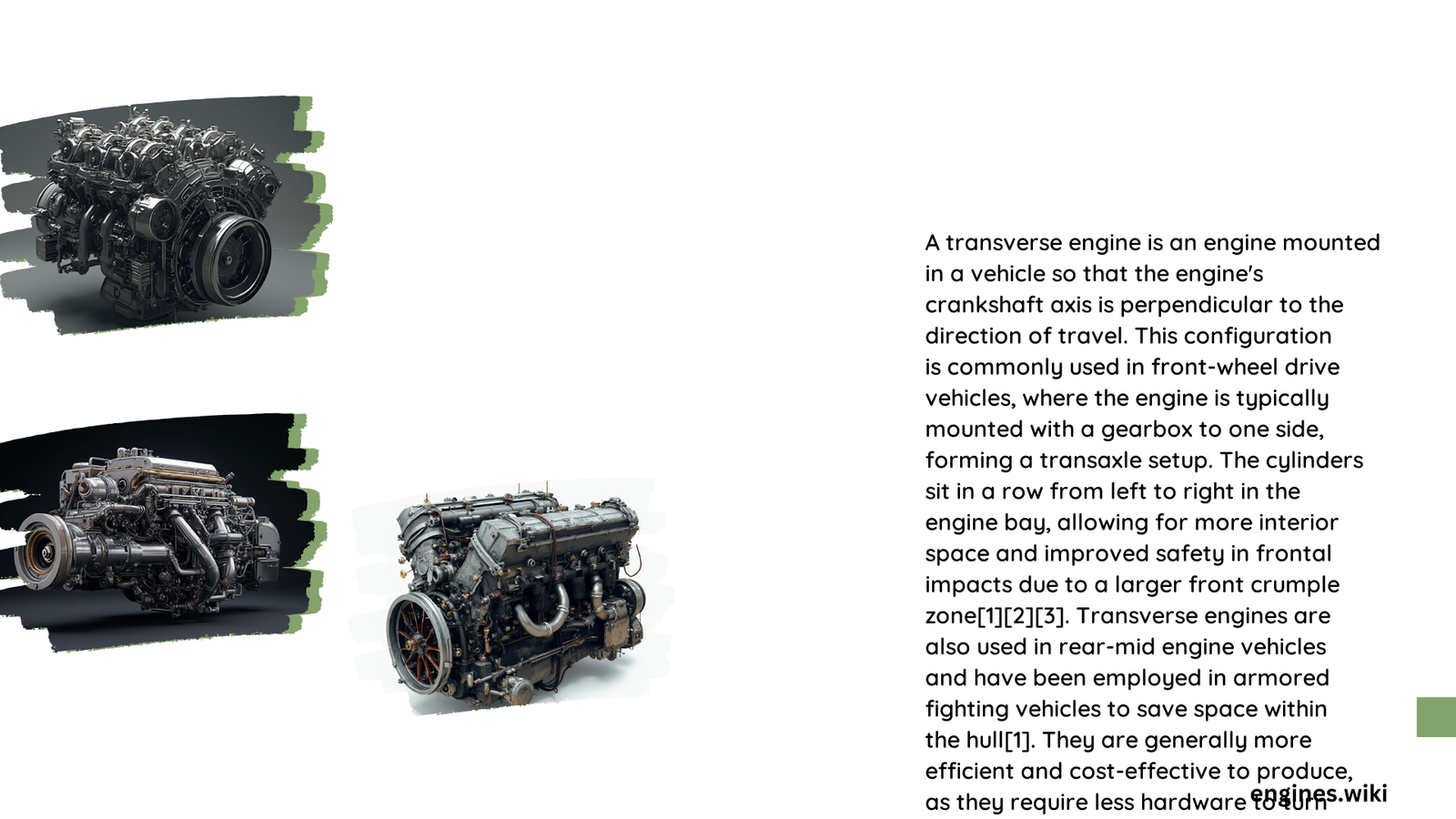A transverse engine represents a revolutionary automotive engineering configuration where the engine’s crankshaft is positioned perpendicular to the vehicle’s direction of travel. This innovative layout fundamentally transforms vehicle design, enabling more efficient space utilization, improved weight distribution, and enhanced interior packaging for modern automobiles.
What Defines a Transverse Engine?
A transverse engine is characterized by its unique sideways mounting orientation within a vehicle’s engine compartment. Unlike traditional longitudinal engines, this configuration positions the cylinders running from side to side, creating a compact and space-efficient powertrain solution.
Key Characteristics of Transverse Engines
| Feature | Description | Typical Application |
|---|---|---|
| Orientation | Crankshaft perpendicular to travel | Compact and mid-size vehicles |
| Cylinder Arrangement | Side-to-side positioning | Front-wheel drive platforms |
| Transmission Integration | Typically integrated as transaxle | Most modern passenger cars |
Why Do Manufacturers Choose Transverse Engines?

Space Optimization Benefits
Transverse engines offer remarkable advantages in vehicle design:
- Compact Interior Layout: Eliminates central transmission tunnel
- Improved Passenger Space: Enables flatter floor design
- Weight Concentration: Centralizes mass over driving wheels
- Manufacturing Efficiency: Reduces overall vehicle complexity
Performance Considerations
Traction and Handling Dynamics
- Enhanced Front-Wheel Grip: Engine weight directly over driving wheels
- Reduced Drivetrain Complexity: Fewer mechanical components
- Weight Management: Lower overall vehicle mass
- Potential Torque Steer: Requires advanced engineering mitigation
Where Are Transverse Engines Most Common?
Vehicle Segment Analysis
Transverse engines dominate specific automotive categories:
- Compact Cars: Honda Civic, Toyota Corolla
- Family Sedans: Mazda6, Volkswagen Passat
- Crossover SUVs: Honda CR-V, Toyota RAV4
- Minivans: Honda Odyssey, Chrysler Pacifica
Technical Limitations and Challenges
Design Constraints
- Power Output Restrictions: Limited by compact packaging
- Engine Size Limitations: Typically restricted to 4-6 cylinder configurations
- Thermal Management: Complex heat dissipation requirements
- Potential Vibration Issues: Requires sophisticated mounting solutions
Engineering Innovations
Modern Transverse Engine Developments
Recent technological advancements have addressed traditional limitations:
- Advanced Materials: Lightweight alloys reducing overall mass
- Precision Manufacturing: Tighter tolerances improving efficiency
- Electronic Torque Management: Mitigating drivetrain complications
- Hybrid Integration: Enabling more complex powertrain designs
Comparative Performance Metrics
Transverse vs. Longitudinal Engines
| Parameter | Transverse Engine | Longitudinal Engine |
|---|---|---|
| Space Efficiency | High | Moderate |
| Manufacturing Cost | Lower | Higher |
| Power Potential | Limited | Expansive |
| Typical Application | Front-Wheel Drive | Rear-Wheel Drive |
Future Outlook
Transverse engines continue evolving with electrification and hybrid technologies, promising even more sophisticated and efficient designs in future automotive platforms.
Expert Insights
Automotive engineers consistently praise transverse engines for their versatility, noting they represent a critical innovation in modern vehicle architecture.
Reference:
– SAE International Automotive Engineering Papers
– Society of Automotive Engineers Technical Publications
– Automotive Design Research Journals
